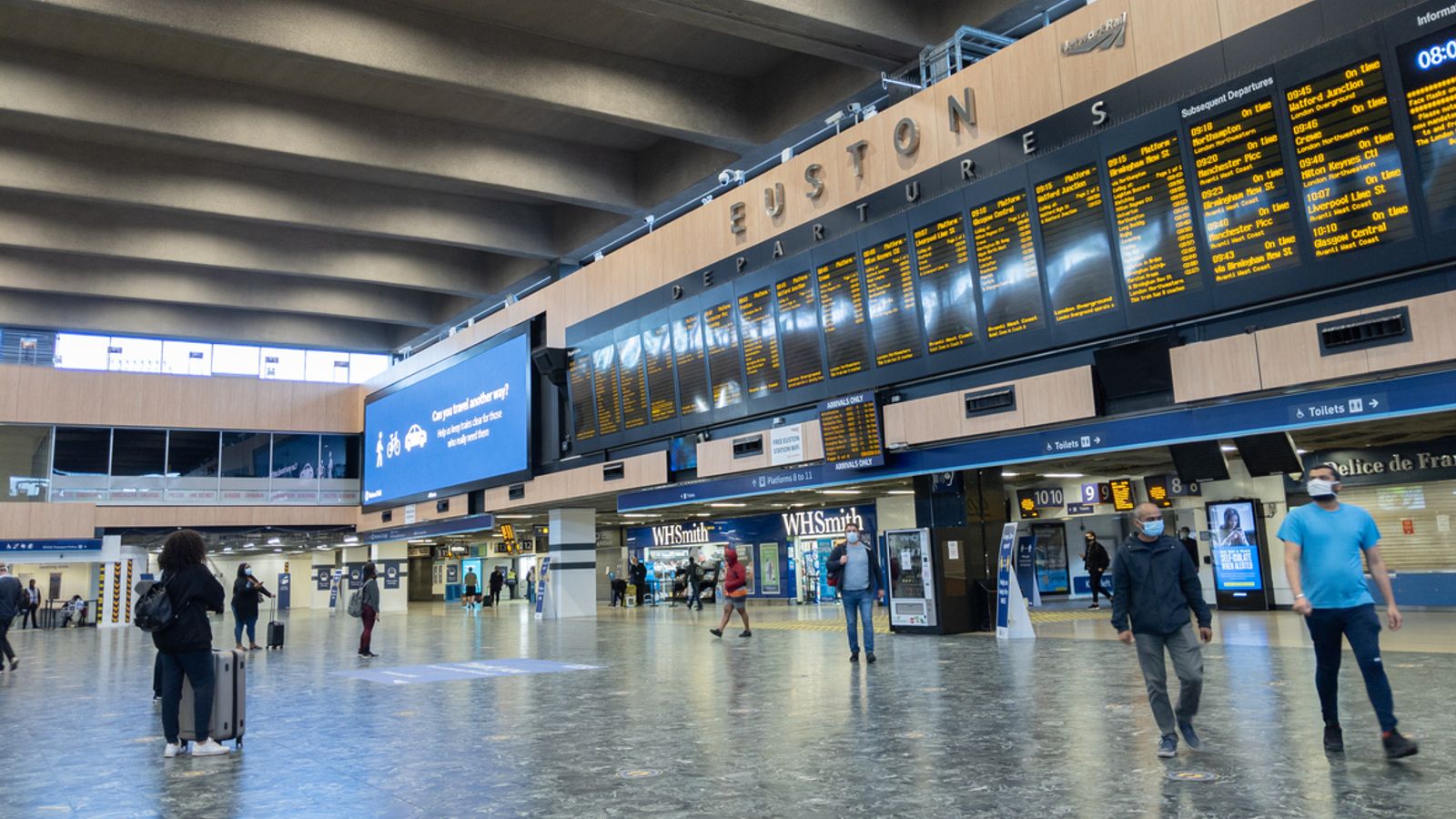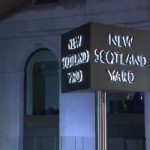Tests at four major railway stations in England and on intercity train services revealed no traces of COVID-19, National Rail has said.
Swabs were taken on areas most commonly touched by passengers, including escalator handles, ticket machines and benches, along with hour-long air samples to detect the virus.
London Euston, Birmingham New Street, Liverpool Lime Street and Manchester Piccadilly station underwent two rounds of testing in January and June, with tests repeated on trains running between stations.
Experts at Imperial College London examined the results and found no coronavirus contamination of any surface or airborne particles of the virus.
Live COVID updates from UK and around the world
Rob Mole, senior programme manager for Network Rail’s response to the pandemic, said: “Station cleaning teams and train staff have made it their mission to keep passengers safe during the pandemic and this is proof their dedicated approach works.
“We want all passengers to travel in confidence on the railway network and we will keep doing our part by rigorously cleaning trains and stations.
“We ask passengers to do their bit too by wearing face coverings while travelling out of respect for others so we can all stop the spread of COVID-19.”
People in England have not been legally required to wear face coverings in settings such as public transport since the government lifted all COVID measures on 19 July.
However, a YouGov poll last month showed that the majority of the British public (71%) want face coverings to remain on public transport and they are still required on some services.
The poll also found 66% of people want face masks to continue to be mandatory in shops and some enclosed public places, against 27% who thought they should be scrapped.
Follow the Daily podcast on Apple Podcasts, Google Podcasts, Spotify, Spreaker
David Green, senior research fellow at Imperial College London, said: “In the same way that a swab is used to take a COVID-19 test in the nose and throat and sent to the lab, we use a filter to collect any virus particles in the air and swabs to collect viruses on surfaces.
“This approach provides a way of quantifying the amount of virus circulating in these public environments and the effect of mitigation strategies like cleaning and wearing face coverings.
“This is part of a wider programme of work with the public transport sector to understand where this virus is most prevalent so that we can return to pre-pandemic activities as safely as possible.”






















